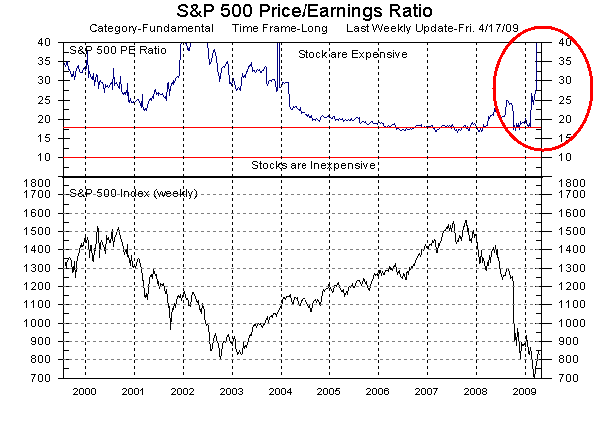I look at this issue of stock market volatility and retracement a
little differently.
During the period 2006-2008, I frequently wrote about the fact that
the S&P 500 P/E ratio was remaining relatively constant at around 18.
Then there was surge in 2008, and then a retreat back to the constant
level, until it became parabolic in 2009. So it remained constant for
most of four years.
During those years, I never thought it was an accident that it stayed
constant. I speculated that computerized trading programs were all
using the same algorithms, namely "sell when the p/e ratio goes above
18, buy when it goes lower." Thus, the value 18 became a sort of
self-fulfilling prophecy.

We are now completing two years of a different kind of constant
performance, based on my DJIA historical page.
http://www.generationaldynamics.com/cgi ... 010.i.djia
You'll see that the Dow was at about 11600 at the beginning
of 2011. Today it's above 13000, so it appears that the Dow
has grown 12% in the last two years.
But now take a look at the "(% of Trend)" column, which compares the
Dow to the historical long-term exponential growth trend, and you'll
that this value has remained almost constant for two years,
in the 190% to 200% range.
That is, on 1/1/11 the Dow was at 190% of the trend value 6148. But
today, the Dow is at 196% of the trend value 6726.
Once again, I don't believe that this is a coincidence. Once again,
I speculate that the computerized trading programs are using
algorithms that are following a Dow growth rate of 4.5% per year.
I don't know how those programmers came up with an expected growth
rate of 4.5% -- perhaps it's just a coincidence that it equals
the historical growth rate of the Dow. But those algorithms say
"Sell if stocks go above 4.5% growth, buy if lower." Thus,
the 4.5% growth rate becomes a self-fulfilling prophecy.
So, until some unexpected event occurs, a trading strategy that
would have worked well in the past two years and may continue
to do so for a while is to assume that the Dow will always
retrace to the 190% to 200% of trend range.
However, I'm not giving investment advice, and I would remind anyone
who invests in today's market to be aware of the "Principle of Maximum
Ruin," which is definitely alive and well. That is, when all is said
and done, the maximum number of people will be ruined to the maximum
extent possible.
